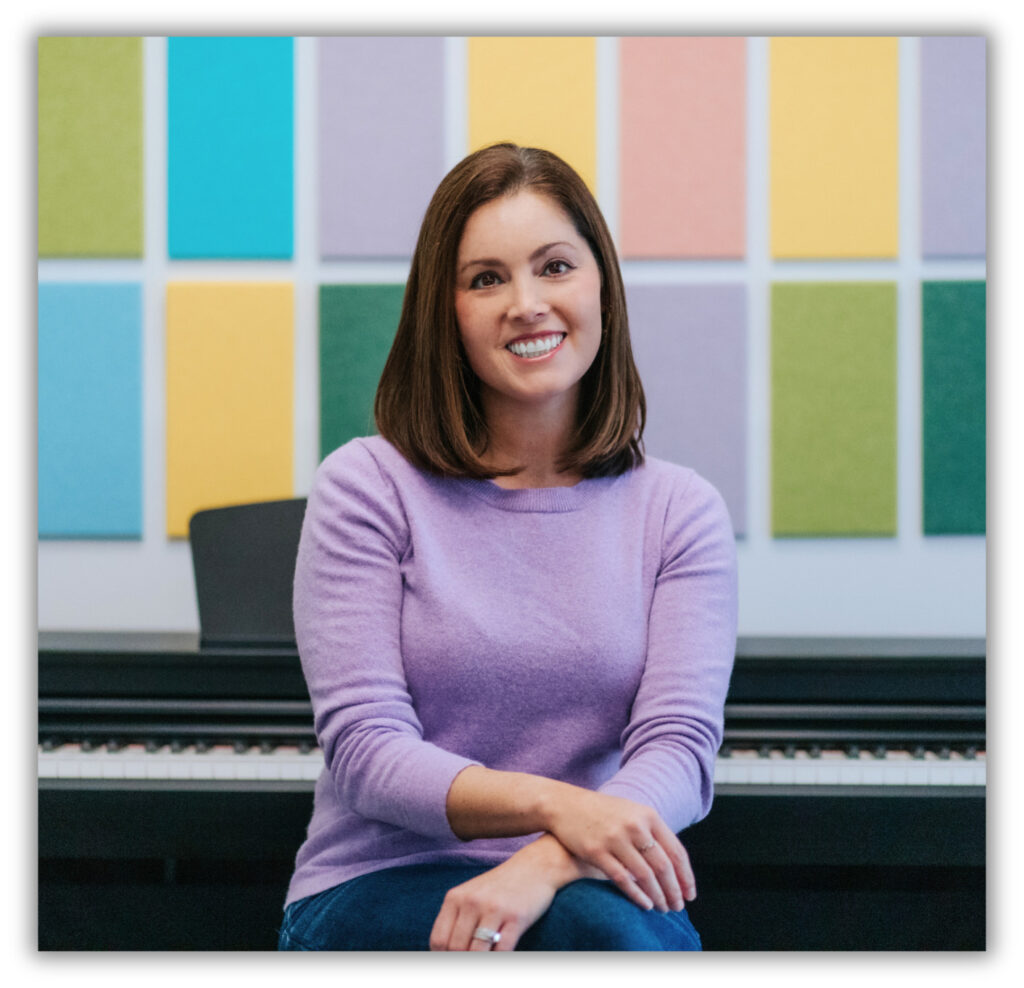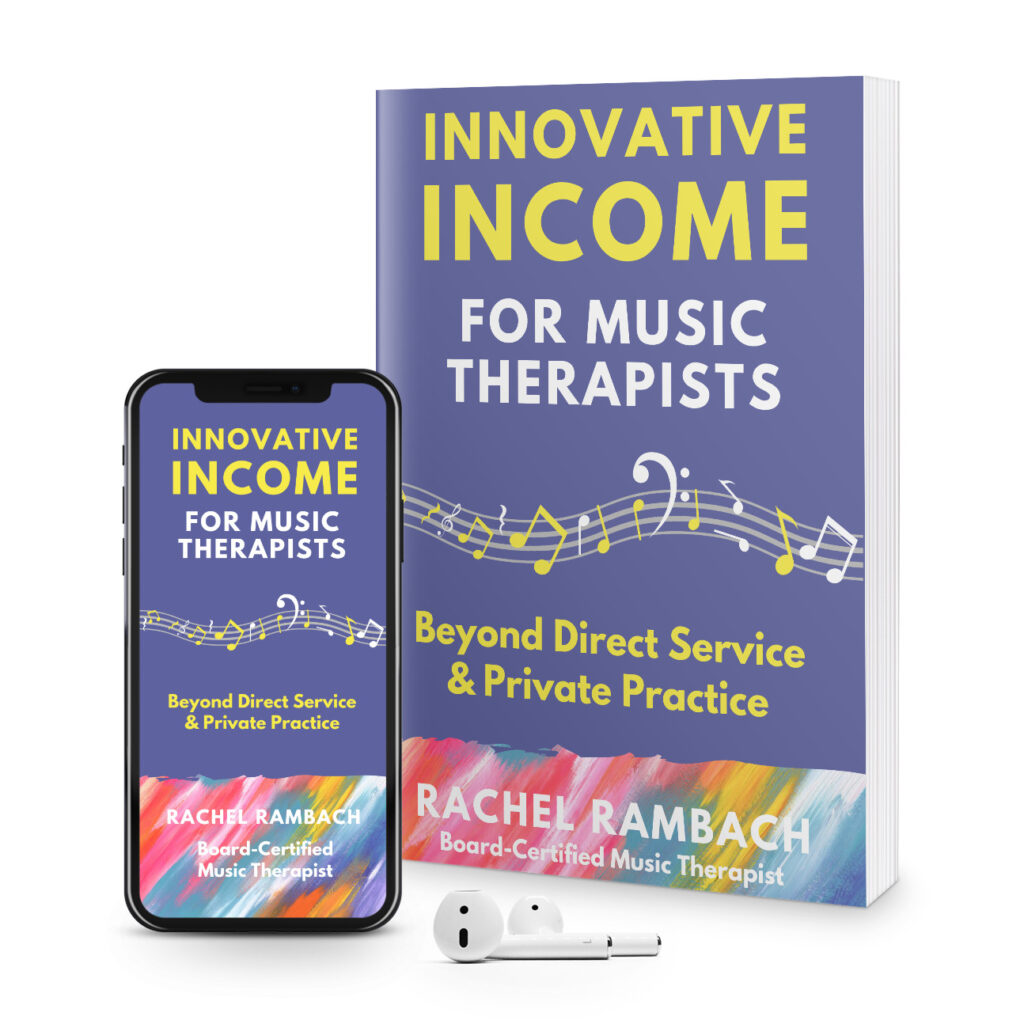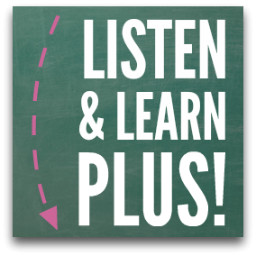by Rachel | Professional Development, Resources & Tips
Anytime you have the opportunity to talk with a total rockstar in your professional field about one of your favorite topics, you take it. Dr. Andrew Knight is a professor of music therapy at Colorado State University, and someone I’ve looked up to since meeting him quite a few years ago at an AMTA national conference.
He interviewed me for the songwriting course he is teaching this summer, and graciously allowed me to share the interview here with you. We talk about how I approach songwriting, the blocks many music therapists face when it comes to writing and sharing their work, my actual process, and of course, the Songwriting Challenge.
(more…)
by Rachel | Resources & Tips

Songwriting has always been a big part of my work as a music therapist, because I like to use mainly original compositions in my sessions, groups, and classes. Not a week goes by that I’m not coming up with a new song here and there.
Between just having released a brand-new songbook, hosting a Songwriting Challenge for music therapists, and my clinical work as usual, my professional life has seemed to revolve around songwriting for the last month or so — and I’m okay with that!
One of the questions I’m frequently asked by other music therapists is in regards to my songwriting process. I totally get it, because I love hearing about how others do it, myself. Since this pops up so often in my inbox and in conversations with people who want to become more practiced songwriters, I’ll share how my process looks.
Songwriting is a Ritual
Of course, there are plenty of times when I write a song on the fly during a session (which may or may not make it into my memory bank or get written down/recorded later); but in most cases, songwriting for me has become very ritualistic.
I have a particular set-up that must be in place before I begin: my computer in front of me, my guitar to my right, and my iPhone next to me (in the photo above, I substituted my iPad since I was using my phone to take the picture).
While most of my songwriting takes place at my desk in my office, sometimes I change up the location to either my kitchen island (as you see in the photo) or desk at work.
Before I actually start writing, I make sure my guitar is tuned, that I have all the information I need — like correspondence from a client’s parent/teacher/therapist, any facts I’ll use in my song content, my own notes, etc. — in front of me, and then I’m ready to dive in.
Getting It Down on “Paper”
I’m a digital girl all the way, and since I’ll be accessing my song on my iPad during a session (if it’s not completely memorized) or pulling it up on my computer to record later, the actual writing happens on a template I have created in Pages (the word-processing software for Mac).
I always start with the lyrics, since I want to make sure I’m including all the language needed to address a goal or objective for a client or group. I always have RhymeZone pulled up in my browser for help coming up with rhyming words as I write.
My iPhone comes in handy during the lyrics phase, because I record any melody fragments that manifest using the Voice Memos app. This is an important step, because otherwise I will have completely forget them by the time I’m ready to compose the entire melody and figure out chords.
Once the lyrics are complete, I grab my guitar and start piecing together that melody, often referring back to anything I’ve recorded. This becomes a balancing act, singing and strumming and then keeping my guitar from falling off my lap while typing the chords on my lead sheet. I make sure to check and double-check each line for accuracy after the chords are written.
My finished lead sheet is saved in a Dropbox folder as a PDF, along with all of my other original compositions. That way I can easily pull them up on my iPhone or iPad if needed. I save the original Pages document in a folder on my computer, categorized by song topic or purpose.
Learning My Song
My work is not done yet. Once I’ve finished the lyrics, melody, and chords, it’s time to get familiar with the song as a whole since the writing process is often so choppy. I sing and play through the song several times…as many as needed until I’m completely comfortable with the melody and have established the strum pattern I want to use.
Then I go back to my Voice Memos app and delete any of the fragments I recorded earlier. It’s time to create a draft recording — this is what I’ll use as a reference point when it comes time to record the song “for real”.
The Time Factor
Because I have established such a step-by-step process for writing songs, it really isn’t as time-consuming as you might think. It seems as though the time factor is what holds many music therapists back from writing more of their own songs, which is why I always encourage them to establish a process for themselves.
On average, I would say that it takes me about 45-6o minutes to complete the entire process of writing one song. And at the end of that process, not only do I have the song written, but I also have a completed lead sheet and a quick recording.
Establishing YOUR Process
There are so many ways to write songs, and there are no right or wrong ways of doing so. What works beautifully for me may not appeal to you in the slightest.
What does your songwriting process look like? If it’s all over the place, that’s okay too…it’s all about figuring out what works best with your songwriting style and taking into account your preferred methods for creative processes.
Music therapists, I hope you’ll consider taking the Songwriting Challenge! Click below to learn what it’s all about — and then join me to become a better songwriter while earning CMTE credit.
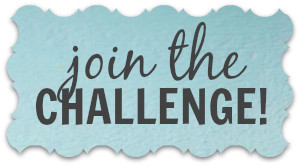
by Rachel | Resources & Tips
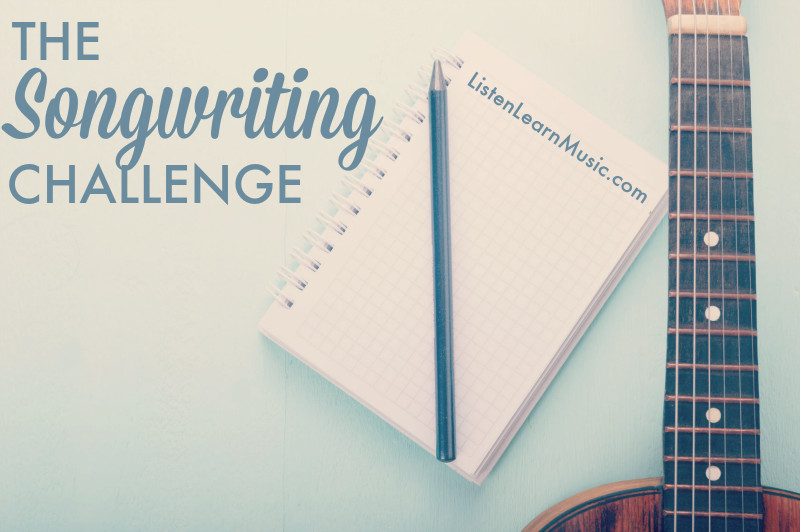
Songwriting, whether for work or just for fun, is one of my favorite things to do. But I won’t lie: it can be a challenge. Finding the time, motivation, and creative energy required to write a good song doesn’t always come easily.
Luckily, I have an advantage in that I’ve been at it for many years now. I always tell people that the more you write, the easier it gets — isn’t that true of just about everything in life? I also create a new early childhood class curriculum every few weeks and work with music therapy clients for whom I write original music.
After hearing from countless music therapists who tell me they want to become better songwriters, I came up with the idea for a songwriting challenge. It’s open to anyone (not just music therapists), and the goal is to inspire participants to exercise their songwriting muscles.
You can read all the details here, or just go ahead and sign up below. The first songwriting prompt will be delivered to your email inbox on Wednesday, April 22!
by Rachel | Listen & Learn Music

Almost five years ago, a music therapist named Michelle Erfurt approached me with the idea to create a Listen & Learn songbook. I had only been writing and sharing songs for a few months, but I was excited to take the leap into publishing.
We worked our tails off for months — I wrote and transcribed the music while she took care of layout, graphic design, and manufacturing — and then we debuted the books at the 2009 AMTA national conference. The final product was awesome! I felt so proud to have my name on the cover. Michelle and I continued selling the songbooks throughout the next couple of years until they were all gone.
By the time we ran out of inventory, hard copy songbooks seemed to be a thing of the past. I continued creating songbooks, but opted to sell them as digital downloads from that point on. They were faster, easier and cheaper to create and sell, and customers seemed to prefer them because they were in turn more affordable and instantly accessible.
Michelle found her calling during that first songbook project; just a few months ago she launched Music Therapy E-Books with Rachel See. And I’m launching my latest digital songbook collection, Spring Into Summer, a week from today! Until then, you can preorder and get the first two songs PLUS a bonus song that won’t be available after the release. Check it out here.
As much as I love creating digital resources, there’s something special about having authored a real, hard copy book that sits on my bookshelf. And while I don’t see myself going that route again anytime soon, it was an awesome beginning to my songbook publishing adventures!
by Rachel | Resources & Tips

My local community theater held auditions for The Sound of Music this month, and I had several students try out. That meant lots and lots of “Do-Re-Mi” and “My Favorite Things” — though I didn’t mind at all, since it’s one of my favorite musicals. (A bit of trivia: I played Louisa von Trapp at that same community theater 15 years ago).
Needless to say, I’ve had these songs on the brain, and they spilled over from my lessons into music therapy session planning. I incorporated the children’s book version of “My Favorite Things” into one of my student’s sessions, which then led into a songwriting activity.
I asked my student to name her “favorites” in several different categories, which was a great way to target skills like answering questions, expressive language, and conversational skills. Then I took her responses and wrote a special version of the song just for her. I can’t wait to share it with my student at her session tomorrow!
Today at Listen & Learn Plus, I’m sharing a simple template for recording your students’ favorite things, as well as the finished version of the song I wrote (including the easy chords I use to play it) along with the mp3 and instrumental track.






